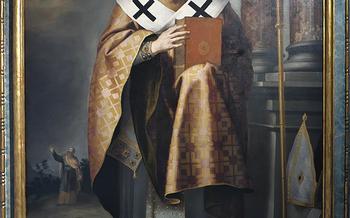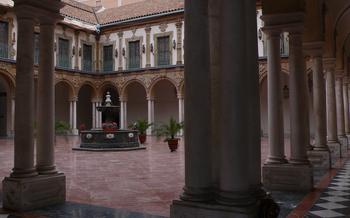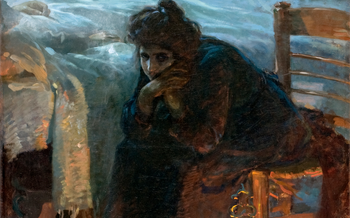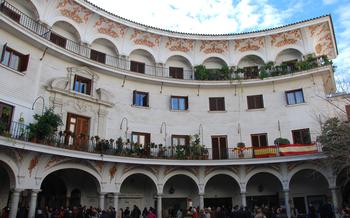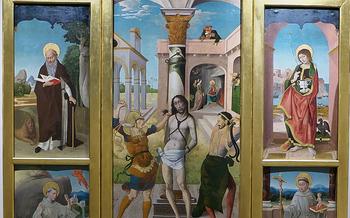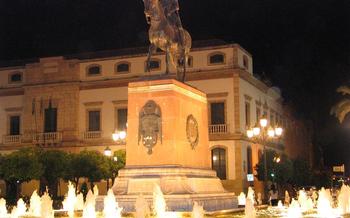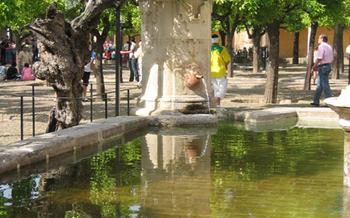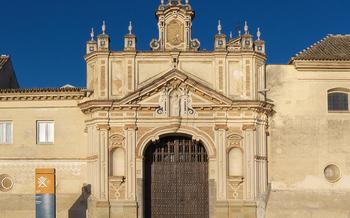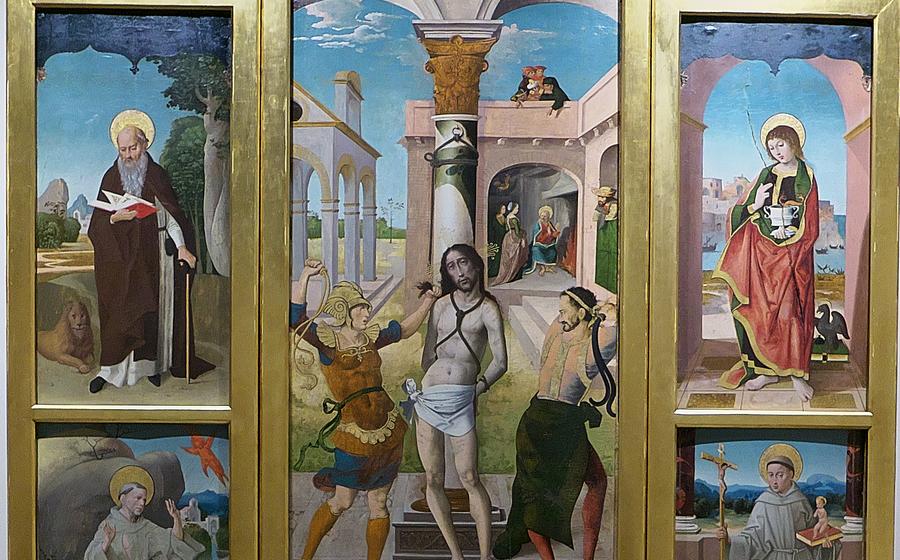
Museo Bellas Artes de Córdoba (Fine Arts Museum)
- Location and Getting There:
- Collection Highlights
- Religious Art
- Cordoban Artists
- Temporary Exhibitions
- Museum Shop
- Accessibility and Facilities
- Guided Tours
- Photography and Social Media
- Surrounding Area
- Local Festivals and Events
Location and Getting There:
Situated in the heart of Córdoba's historic center, the Museo Bellas Artes de Córdoba can be found at Plaza del Potro This picturesque square, known for its iconic 16th-century fountain, is a popular tourist spot in its own right. The museum is conveniently accessible by public transportation, with several bus routes stopping nearby. For those arriving by car, there are limited parking options in the surrounding streets. However, visitors are advised to use public transportation or taxis to avoid the hassle of finding parking, especially during peak tourist season.
Collection Highlights
The Museo Bellas Artes de Córdoba boasts an impressive collection of artworks spanning various artistic styles and periods, showcasing the evolution of Spanish art from the Middle Ages to the present day. Among the highlights of the collection are masterpieces by renowned artists such as Pablo Picasso, Julio Romero de Torres, and Bartolomé Esteban Murillo. Visitors can admire Picasso's "Cabeza de Mujer con Mantilla" (Head of a Woman with Mantilla), a striking portrait capturing the essence of Andalusian femininity. Julio Romero de Torres, a native of Córdoba, is represented by several works, including "La Chiquita Piconera" (The Little Stone Breaker), a poignant depiction of a young girl working in the quarries. Murillo's "San Francisco en Éxtasis" (Saint Francis in Ecstasy), a stunning portrayal of the saint's spiritual fervor, is another must-see in the museum's collection. These exceptional artworks offer a glimpse into the talent and creativity that have shaped the history of Spanish art.
Religious Art
The Museo Bellas Artes de Córdoba houses a significant collection of religious art, reflecting the deep Catholic roots of Spain. Among the notable works is the "Adoration of the Magi" by Pedro de Campaña, a masterpiece depicting the biblical scene of the Three Kings paying homage to the infant Jesus. The museum also features several works by Bartolomé Esteban Murillo, a renowned 17th-century painter known for his depictions of religious subjects. His paintings, such as "The Immaculate Conception" and "The Annunciation," showcase his mastery of light and color, capturing the essence of divine moments. The museum's collection also includes works by other renowned Spanish artists, such as Francisco de Zurbarán, whose painting "Saint Francis of Assisi in Ecstasy" portrays the saint's spiritual devotion, and Juan de Valdés Leal, whose "The Last Supper" offers a unique interpretation of the biblical event. These religious artworks provide a glimpse into the deep faith and artistic traditions that have shaped Spanish culture for centuries.
Cordoban Artists
The Museo Bellas Artes de Córdoba proudly showcases the works of talented local artists from Córdoba, who have made significant contributions to the city's rich artistic heritage. Among them, Julio Romero de Torres stands out as a renowned painter known for his evocative portrayal of Andalusian culture and traditions. His works, such as "La Chiquita Piconera" and "El Amor Brujo," capture the essence of Córdoba's vibrant spirit and flamenco heritage. Another notable Cordoban artist is Mateo Inurria Lainosa, whose intricate and detailed engravings offer a glimpse into the city's historical and religious past. His works, such as "Vista de Córdoba" and "La Puerta del Puente," showcase his mastery of perspective and his deep appreciation for the city's architectural landmarks. These Cordoban artists, along with many others, have left an indelible mark on the museum's collection, providing visitors with a unique opportunity to explore the artistic soul of Córdoba.
Temporary Exhibitions
The Museo Bellas Artes de Córdoba is renowned for its commitment to hosting temporary exhibitions that complement its permanent collection. These exhibitions showcase a diverse range of artistic styles, mediums, and themes, offering visitors a fresh and dynamic experience with each visit. Past exhibitions have explored the works of renowned Spanish and international artists, delved into specific artistic movements, and presented thought-provoking contemporary installations.
One notable temporary exhibition was dedicated to the works of Julio Romero de Torres, a prominent Cordoban painter known for his evocative portrayals of Andalusian culture and traditions. The exhibition showcased over 50 of his paintings, providing visitors with a comprehensive overview of his artistic journey and his unique style.
Another highlight was the exhibition titled "Women in Art: From the Renaissance to the Present," which explored the changing representations of women in art throughout history. The exhibition featured works by female artists from various periods, shedding light on their contributions to the art world and challenging traditional narratives.
These temporary exhibitions not only enrich the museum's offerings but also contribute to its dynamic programming, attracting a diverse audience of art enthusiasts and casual visitors alike. By presenting a variety of artistic perspectives and engaging with contemporary issues, the Museo Bellas Artes de Córdoba establishes itself as a vibrant cultural hub in the city.
Museum Shop
The Museo Bellas Artes de Córdoba offers a well-stocked museum shop where visitors can find a variety of unique souvenirs and art-related items to commemorate their visit. The shop features a wide selection of books, including art history publications, exhibition catalogs, and guides to the museum's collection. Visitors can also purchase high-quality prints and reproductions of some of the most famous artworks in the museum, allowing them to take a piece of Córdoba's artistic heritage home with them.
In addition to books and prints, the museum shop sells a range of other art-related items, such as postcards, posters, and magnets. There is also a selection of jewelry, scarves, and other accessories inspired by the museum's collection. By supporting the museum shop, visitors can not only take home a memento of their visit but also contribute to the museum's ongoing mission to preserve and promote the arts in Córdoba.
Accessibility and Facilities
The Museo Bellas Artes de Córdoba is committed to ensuring that all visitors have a comfortable and enjoyable experience, regardless of their abilities. The museum is wheelchair accessible, with ramps and elevators providing easy access to all floors. Accessible restrooms are also available for visitors' convenience. The museum staff is trained to assist visitors with disabilities, and they are always willing to provide additional assistance if needed. The museum also offers a variety of educational programs and events that are designed to be inclusive and accessible to all. These programs include guided tours in sign language, audio descriptions of the artworks, and tactile tours for visitors who are blind or visually impaired. The museum's website also provides a wealth of information for visitors with disabilities, including a detailed accessibility guide and information on how to book accessible tours and programs.
Guided Tours
For a more enriching and immersive experience, visitors to the Museo Bellas Artes de Córdoba can opt for guided tours. These tours are conducted by knowledgeable and experienced guides who provide insightful commentary on the museum's collection and its historical significance. Visitors can choose from a variety of tours tailored to different interests and levels of expertise, including general overviews, thematic tours focusing on specific artistic movements or periods, and in-depth tours exploring the works of individual artists. Guided tours are available in multiple languages, ensuring accessibility for visitors from diverse backgrounds. To ensure a spot, especially during peak tourist season, it is advisable to book a tour in advance through the museum's website or by contacting the museum directly.
Photography and Social Media
The Museo Bellas Artes de Córdoba encourages visitors to capture their experiences and share them with the world through photography and social media. While photography is generally permitted within the museum, there may be restrictions on using flash or tripods. Visitors are kindly requested to be respectful of other visitors and the artworks on display.
The museum also embraces the use of social media as a means of connecting with art enthusiasts and promoting its collection. Visitors are encouraged to share their photos, comments, and experiences using designated hashtags (#MuseodeBellasArtesCordoba, #CordobaArt, #SpanishArt). The museum's social media channels provide regular updates on exhibitions, events, and behind-the-scenes glimpses into the world of art and culture in Córdoba.
By actively engaging with the museum's social media platforms, visitors can become part of a vibrant community of art lovers and stay informed about the latest happenings at the Museo Bellas Artes de Córdoba.
Surrounding Area
After immersing yourself in the world of fine arts, take some time to explore the vibrant neighborhood surrounding the Museo Bellas Artes de Córdoba. Just a short stroll away, you'll find yourself in the heart of the city's historic center, a UNESCO World Heritage Site. Wander through the narrow cobblestone streets and admire the stunning architecture, a blend of Moorish, Renaissance, and Baroque styles.
Stroll along the picturesque Calleja de las Flores, a charming flower-filled alleyway, and soak in the enchanting atmosphere. Don't miss the opportunity to visit the nearby Mezquita-Catedral de Córdoba, a magnificent architectural masterpiece that seamlessly fuses Islamic and Christian influences. Marvel at its iconic forest of columns, intricate arches, and breathtaking stained-glass windows.
Indulge in the local gastronomy at one of the many traditional restaurants in the area. Savor the flavors of classic Cordoban dishes, such as salmorejo (a chilled tomato soup), flamenquín (a fried pork roll), or berenjenas con miel (eggplant with honey).
For a unique shopping experience, head to the nearby Zoco Municipal, a vibrant market where you can find a diverse range of local handicrafts, souvenirs, and artisanal products. Whether you're looking for exquisite jewelry, colorful ceramics, or hand-woven textiles, you're sure to find something to treasure.
Create a well-rounded itinerary that combines art, history, and culture by exploring the Museo Bellas Artes de Córdoba and its captivating surroundings. Immerse yourself in the city's rich heritage, savor its culinary delights, and take home unforgettable memories of your visit.
Local Festivals and Events
Córdoba's cultural calendar is brimming with vibrant festivals and events that celebrate the city's rich heritage and artistic traditions. From the renowned Córdoba International Guitar Festival, showcasing the talents of world-class musicians, to the Córdoba Patios Festival, where residents transform their courtyards into colorful works of art, the city comes alive with creativity and celebration.
If you plan your visit to coincide with one of these events, you'll be treated to an unforgettable experience that immerses you in the local culture. The Córdoba Carnival is a riot of color and music, with parades, costumes, and lively street performances filling the city's historic center.
For a taste of traditional Andalusian dance, don't miss the Flamenco Festival, where passionate performances showcase the intricate footwork and soulful melodies of this iconic art form. These festivals and events offer a unique opportunity to witness Córdoba's vibrant cultural expressions and connect with the city's artistic heart.
